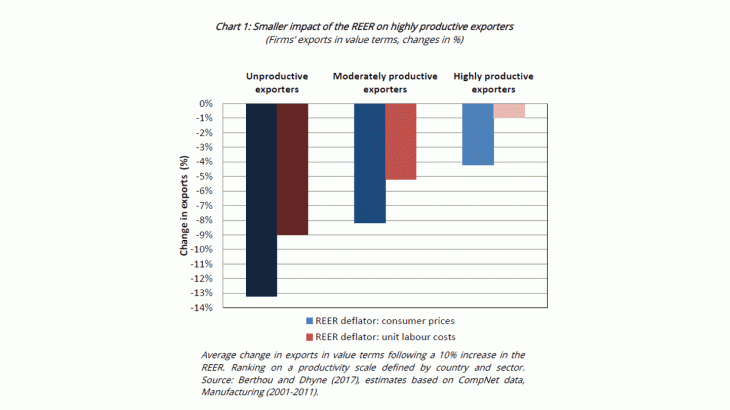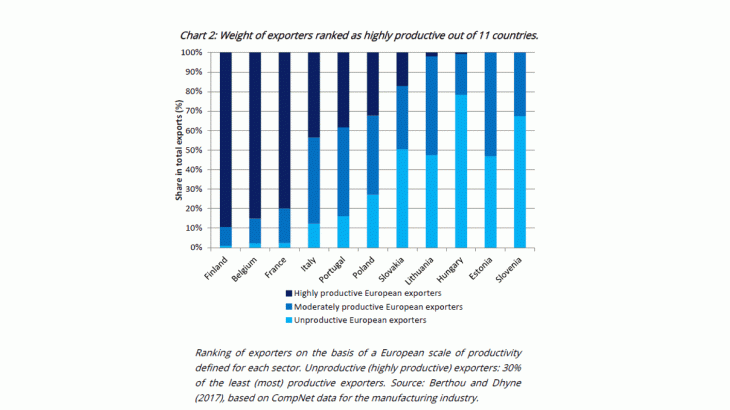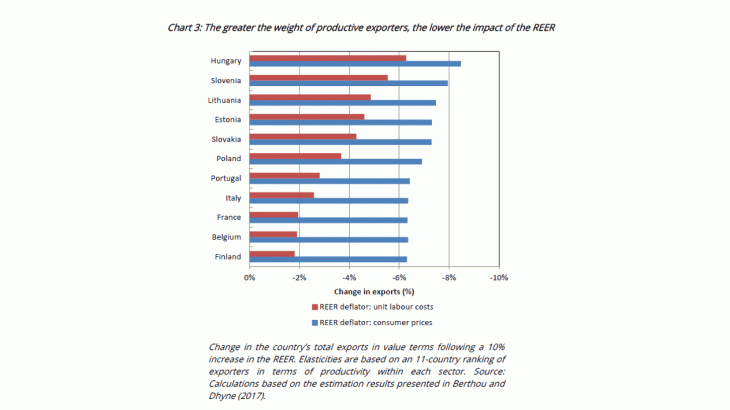The sharp appreciation of the euro vis-à-vis the dollar since the beginning of 2017 has once again raised fears that an overly strong euro will penalise the exports of European firms and hinder the current recovery.
In a study to be published as a Banque de France working paper (Berthou and Dhyne, 2017), we estimate the impact of a variation in the Real Effective Exchange Rate (REER) on the exports of European firms located in eleven countries, including France (data for Germany are not available).
We show that a 10% appreciation in the REER reduces firms’ exports in value terms by between 5% and 8% on average (see Chart 1). The strongest effect is obtained when the REER is constructed using consumer price indices. The lower elasticity obtained with the REER constructed using unit labour cost indices results from a low transmission of production costs to prices.
Limited effect of exchange rate fluctuations on productive exporters
Do firm characteristics play a role in determining the effects of the exchange rate? Estimates show that there is a very high degree of heterogeneity in the response of exporters when ranked by size or productivity. In each country and within the same sector, the exports of the least productive (smaller) firms appear to be very sensitive to variations in the REER, while the exports of the most productive firms appear to be relatively insensitive (see Chart 1).
Similar results are obtained if exporters are ranked on a European scale of productivity (11 countries) rather than a national one, within the same sector: the most productive European exporters (larger ones) are less impacted by exchange rate fluctuations than the least productive (smaller) exporters.
The reaction of productive exporters limits the aggregate impact of the exchange rate
In each European country, a small group of high-performing firms account for a very large share of exports. In France, about half of all exports are made by the 20% most productive exporters.
How do French exporters fare in terms of productivity compared to their European competitors? If French exporters are ranked, no longer on a national scale, but on a European scale of exporters operating in the same sector, we find that about 80% of French exports are made by exporters ranked among the most productive (top 30%) out of eleven European countries (excluding Germany in the absence of data), ahead of Italy and behind Finland and Belgium (see Chart 2).


